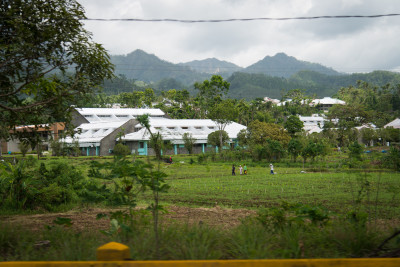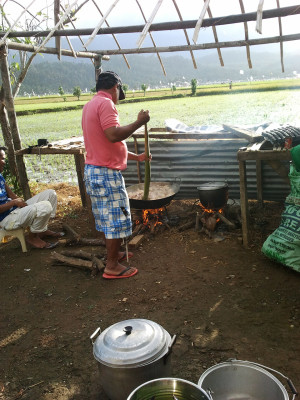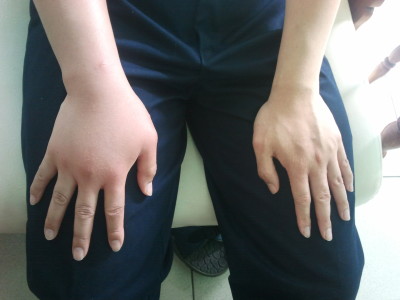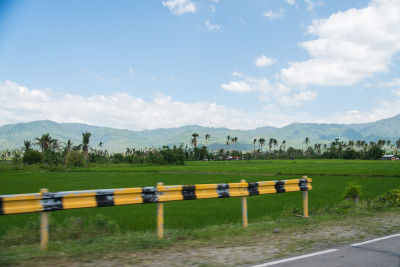Life as a Leyteño: Day to Day
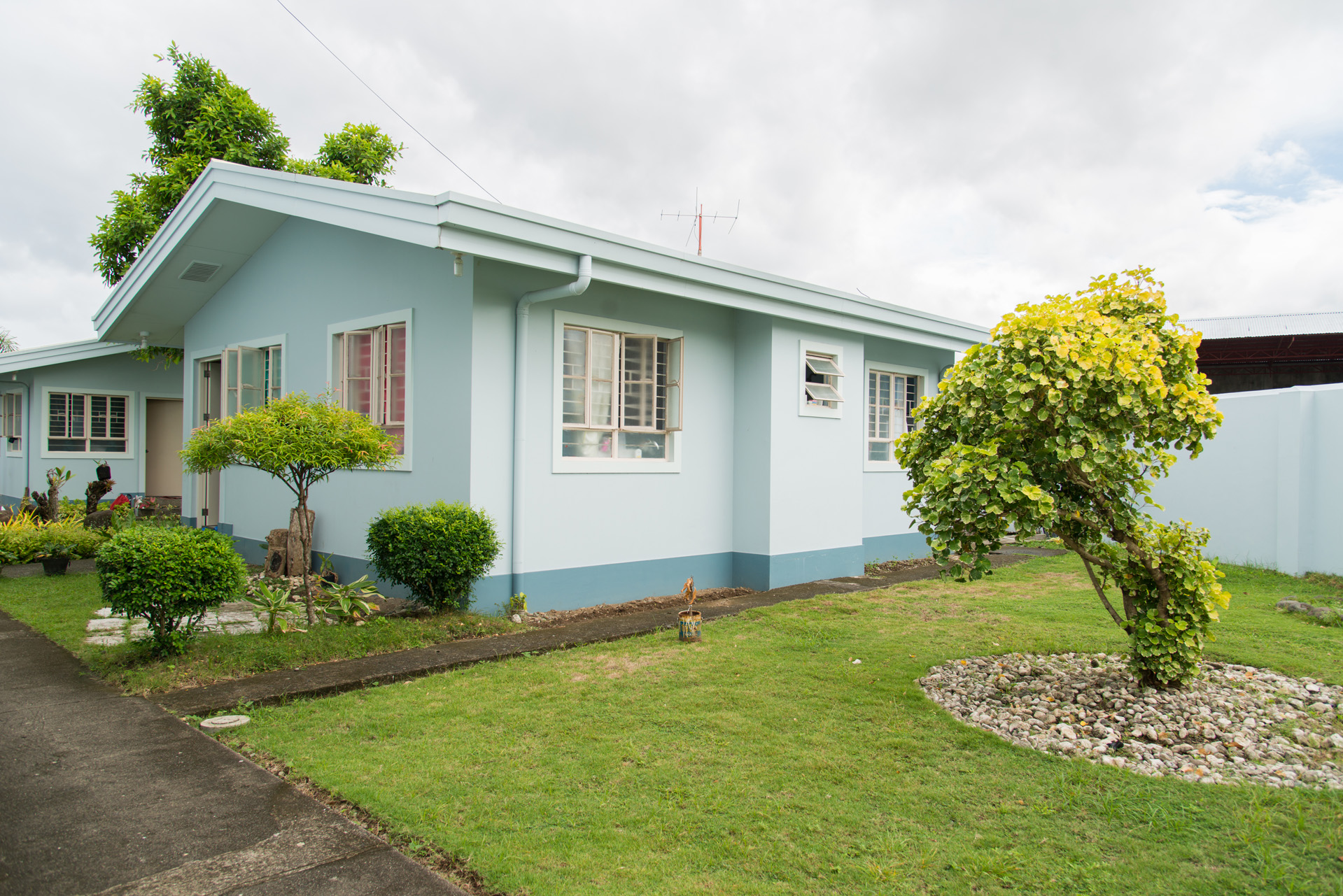
Like in most parts of the Philippines, the climate in Baybay is warm all year round. Temperatures are consistently above 85°F and humidity is almost always over 60%. However, it seems that Leyte in general gets considerably more rainfall than provinces in the Luzon region; there was never a shortage of rain clouds and random showers during my stay. We visited Pampanga in Luzon in December two years ago and we hardly experienced any rainfall, yet December is considered to be one of the wettest months of the year. As a result of the unpredictable showers, we typically carried an umbrella which served both as a shield from the sun and the rain, which at times would jockey for position every few minutes. I could only imagine what it’s like during the actual rainy season.
Though Baybay is one of the largest cities in the Leyte province, it’s not very urbanized so it still has that small town feel. Even the busy city center doesn’t feel particularly crowded, at least by Philippine standards and the small number of vehicles leads to less pollution. I noticed a lack of smoky, two-stroke motorcycles and overworked diesel engines commonly found in most industrialized cities in the country so the air was fresh and clean. You’ll still get the occasional whiff of diesel fumes while wandering around the busy downtown area, but it doesn’t take more than a few steps in the opposite direction to replace it with the gentle sea breeze.
The city is spread out over a huge area of land so if you’re not fond of crowds you can just venture a few kilometers away from the city center and find yourself surrounded in the natural beauty of the island. Not much further to the north lies the largest educational institution in all of Leyte: Visayas State University, which itself is designed and built around the natural splendor of its surroundings.
The homes and the buildings in the city have that prototypical ‘weathered’ look that’s common all throughout the Philippines. In Manila, it’s typically caused by the high levels of pollution in the air, but in this place, it’s probably caused by the sizable amount of rainfall prevalent in this region. During my stay, I had the privilege of going on a God’s Message magazine distribution with the youth from church as well as visiting some of the local children to deliver reminders. Behind the facade of houses and business visible from the main streets lie these hidden alleyways and paths that lead to what’s essentially neighborhoods within the neighborhood. These “back streets” are unpaved, have no names , and in many cases, have to be navigated in single file since they’re so narrow. They get hardly any sunlight because there are so many obstructions overhead, from overhangs from other buildings to a neighbor’s clothes being hung out to dry. Once you enter these streets it immediately becomes clear how the majority of the people here live. Packed in these narrow streets is dwelling after dwelling after dwelling; I refuse to call them houses because some of them are nothing more than concrete shells with a tin roof. Some have only one room, while some are lucky to have a separate living room or even a second floor. What makes this even more mind boggling is that entire families call these tiny dwellings home and somehow they make it work.
Some have the luxury of indoor lighting and even a small television, while some simply sleep on the floor and are satisfied with just having a roof over their head. We visited the home of a young man who lived in, what locals might consider, a large home; made up of a tall concrete structure and a vaulted roof made of corrugated galvanized steel sheeting. There were no doors, nothing to cover the cold concrete walls, hardly any light fixtures or furniture, but compared to everyone else in the alley, this family had it good. Another family we visited lived in a wooden shack that had no windows and sat unevenly suspended over a huge puddle of water. I was not at all surprised at what I saw, this is not the first time I’ve been exposed to the living conditions of the less wealthy citizens of the Philippines, but it really does bring things to perspective. What we consider as living in poverty here in the States could be considered as relative luxury in many parts of Southeast Asia. Despite all of the hardship and scarcity, these people remained receptive and incredibly hospitable to guests and visitors. I did witness an interesting sight during our time in the back alleys; one of the residents was taking a selfie of herself with her daughter with what looked like an iPhone 5. It was a little perplexing to see someone living in a concrete shoebox in a back alley spending their money on an iPhone 5 instead of a saving it up for a nicer place to live. Who knows, maybe it was a gift from relatives in the States or maybe that lady had her priorities all twisted, but in either case it was a confounding sight for sure.
Naturally, people were also very curious of yours truly; practically everywhere we went, someone asked about me. Assumptions ranged from me being Ka Lottie’s (much lighter skinned) son, Lormi’s long lost brother, a visitor from Korea, and even an “artista” (usually refers to a TV entertainer). It was pretty clear that I was not from the area even though I tried my best to look “local”; whether it was the chinky eyes or the pasty complexion, I drew curious looks from everyone. However, I’m happy to say that not once did I feel targeted nor was I taken advantage of because of my foreigner status. I’ll admit, I did feel like a celebrity around town with everyone inquiring about me and giving me big smiles whenever I spoke to them in Tagalog; it must really be a rare sight to see a Chinese/Korean-looking person speaking like a local.
Thankfully, those I came here to visit are fairing a little better than most of the locals. Being that they are a minister’s family, the Siosons are able to live in a pastoral house safe within the church compound. The house is about the size of an average two bedroom apartment here in California, but with five people living inside, it can get a little claustrophobic.
However, the family is doing their best to make do and like the locals, they find a way to make the tight quarters work. It’s not quite what they were used to back here in the States, but they have all of the basic necessities… with some compromises. Their bathroom has a shower, however, due to the low water pressure, its output is reduced to mere dribbling so they have to resort to buckets when washing up. The same deal with the toilet, the water pressure is too weak to send water up into the tank so it has to be flushed by dumping water into the bowl (this also works wonders if you are constantly clogging your toilet). As if that wasn’t enough, only one water fixture can be used at one time; so if mummy is outside doing the laundry, you can’t wash the dishes in the kitchen or fill up your shower bucket in the bathroom until she’s done. In addition to the low pressure, the water supply is generally not safe to drink; a good rule of thumb when you’re in the country is to not drink any water that didn’t come out of a bottle. The water itself is not noticeably dirty, but it’s a well known fact that it’s loaded with microbes and bacteria that are just waiting to wreak havoc on your digestive system. Fortunately there are plenty of clean water providers in town and the Siosons make the trip three times a week to refill their drinking water supply.
Then there are the bugs; the tropical weather seems to bring out the ugliest and most venomous little creatures right out of the woodwork. There was no shortage of ants, both the harmless black and the larger and more threatening red variety, crawling about the garbage or targeting any food left uncovered sitting around the dining table.
There’s also the constant buzzing of flies and worse yet, mosquitoes, who seemed to have a preference for pretty girls so they mostly targeted Lormi, who had her fair share of bites long before I arrived. Large roaches are also a common sight in the Philippines, but thankfully, the pastoral house was free of these disgusting pests. I went without bites for the first two days and began to think that maybe the bugs here in Leyte didn’t like the idea of biting the Chinese-looking types, but that notion was quickly dismissed the day after. On the third day, I found several mosquito bites on my legs and some unusually painful sores on my right arm. As the day wore on, the sores on my arm quickly became red and swollen, then I realized that these were the same exact bites I experienced the last time I was in the Philippines. While I’m still not certain which bug was responsible for these horrific bites, there’s a very good chance they were caused by gnats. A quick Google search for gnat bites reveal images of bites that closely matched what I had. It appears that I have an allergic reaction to their bites as the swelling got so bad that I could barely clench my fist and my puffed up arm began to look like it belonged to a contestant on The Biggest Loser. However, I didn’t let these things ruin my time in Leyte; I wanted to live life as a local and I got just what I wanted.
Speaking of life as a local, I basically shadowed the Siosons as they went about their daily business. We started off around 8am each morning to do the daily run at the public market to buy supplies for the day’s meals. The public market is a veritable horn of plenty, full of fresh produce straight off of local farms, meat butchered right in the stall, and fresh fish caught that same day. It’s best to head off to the market early as the crowds aren’t nearly as big and you’ll have first pick of the day’s inventory. Large refrigerators are not common in these parts, as most retailers don’t even carry full size, single door units so people have to make do with “medium size” refrigerators whose size in between a mini drinks fridge and the smallest single door fridge/freezer unit you can find. This means that fresh food bought in the market often has to be cooked on the same day since there’s usually not enough space in the fridge for a week’s worth of supplies. It really isn’t that bad heading to the market every morning; it’s a good way to get your exercise in and leads to much less food being forgotten and spoiling in the nether regions of the fridge.
Aside from the public market, Baybay also has a its own answer to Walmart: the Prince Warehouse Club. This relatively large department store sells everything from frozen treats to mattresses and everything in between; if you can’t find what you’re looking for in the public market, then you’re likely to find it here; they even have their own company jingle! Security is pretty tight in the store; all shoppers have to surrender their bags and anything that can be used to conceal stolen goods at the entrance before being allowed inside. For a provincial store, their inventory is pretty impressive and from what the Siosons have told me, it’s been steadily improving since it reopened after the hurricane. We were all surprised when we found out that they sold Red Hot Cheetos and Ruffles potato chips and perhaps the most shocking discovery of all, they carried crispy M&Ms! You heard that right, they sell crispy M&Ms at a department store in Leyte! You might be wondering why this is such a big deal, so here’s some background info: crispy M&Ms have been discontinued in the States for several years now and they’re incredibly difficult to get a hold of, even in the age of Amazon and online shopping, so to find them in Baybay of all places is like striking gold in your own back yard! Needless to say, I bought a number of bags to bring back to the States as gifts.
While living here in Baybay does demand a fair amount of adjustment from life in the States, seeing and experiencing it first hand really makes me optimistic and cheerful. When I first heard that the Siosons would have to be transplanted here, I feared the worst; the only thing I knew of Leyte was that it was utterly destroyed by typhoon Haiyan and that people were struggling to survive.
The people here lead a life that’s considerably more difficult than that of an average American, but it’s not insurmountable. And beyond all of the inconveniences; there’s a lot to be thankful for. Leyte is a truly beautiful place, free from the overpopulation and pollution of the major cities and with the rebuilding efforts going strong, it’s only going to get better from here. Of all the places they could have been sent, they were truly blessed to have landed here.

